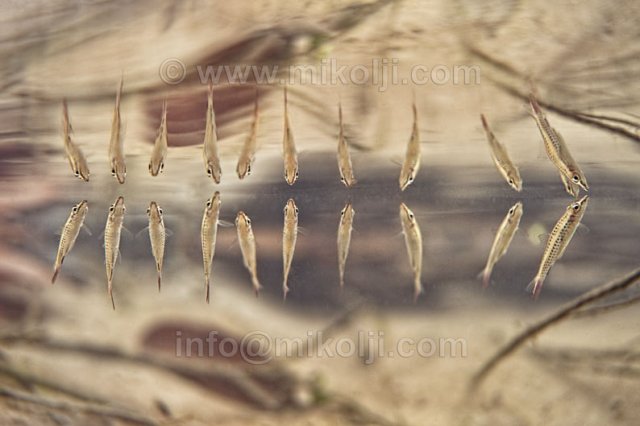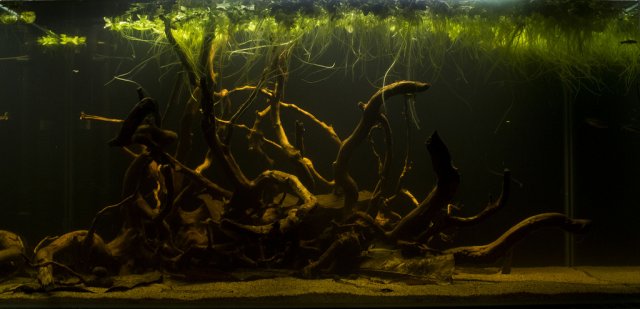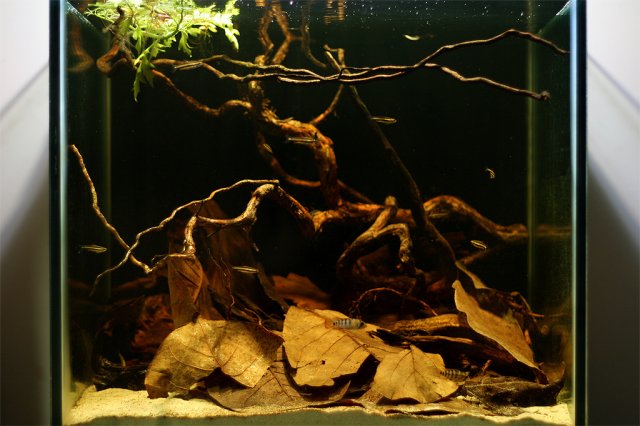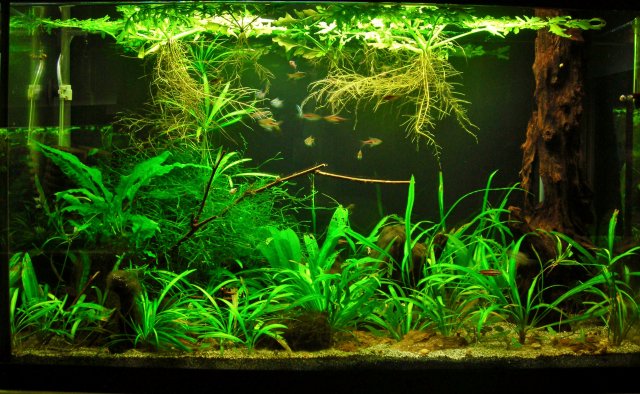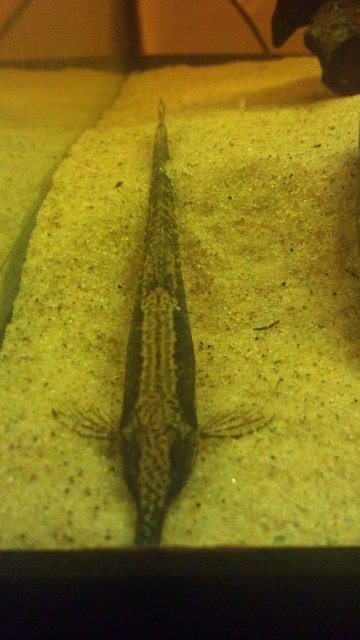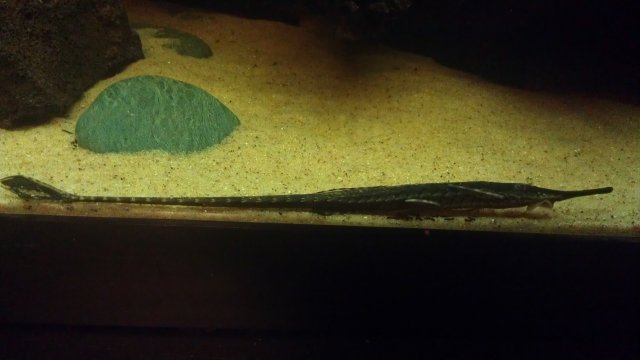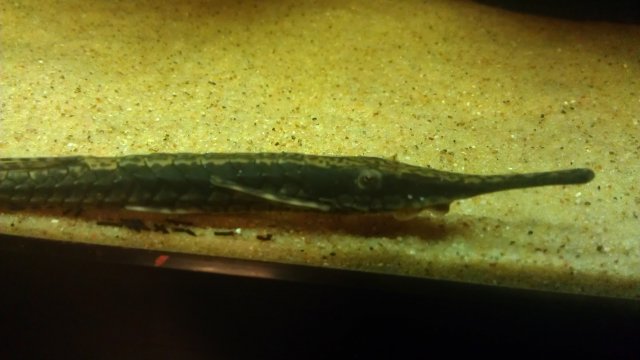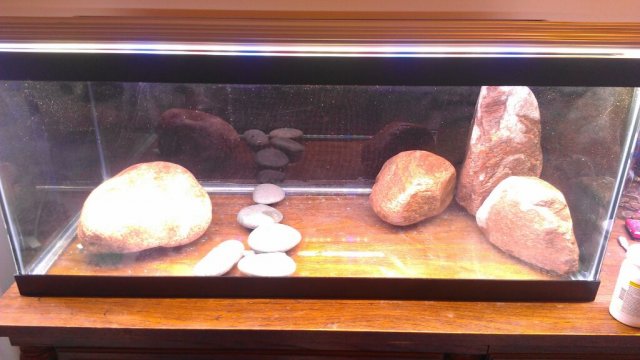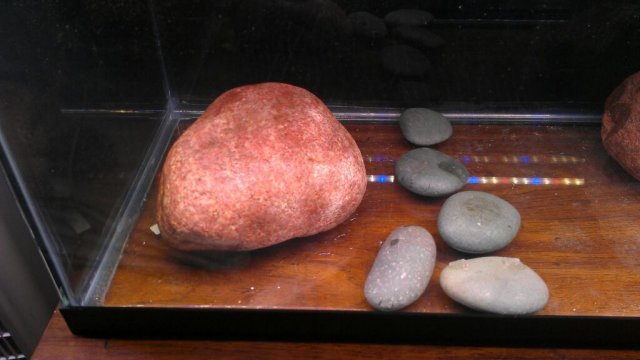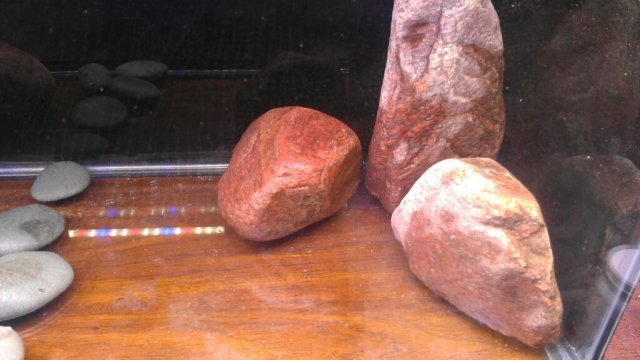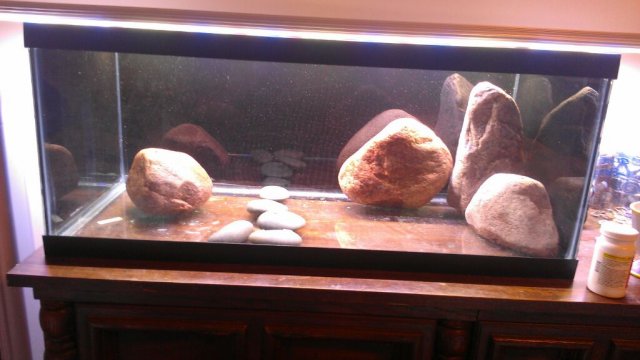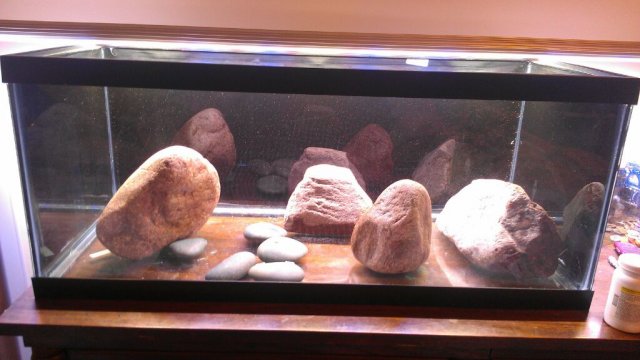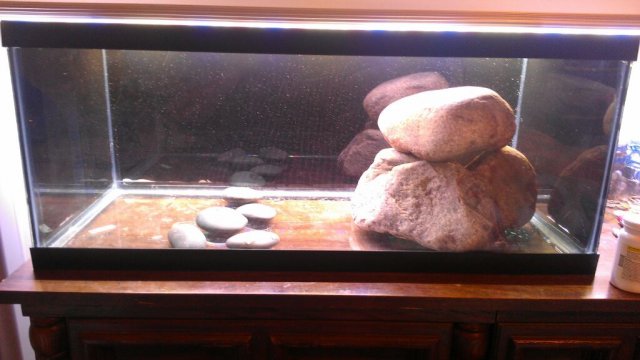Flat stones are often used in a ram set-up because they will usually spawn thereon. Nothing wrong with that, it's up to you. My common rams spawned in a depression on the substrate (it was fine gravel back then) and on wood. My Bolivians spawned on flat rock and in a depression in the sand. I sometimes have used a few chunks of relatively flat rock in my Amazon tanks just to keep open areas; chain swords will spread everywhere but a few areas of rock make controlling the plants easier.
Ah ok I misread or rather misunderstood what they meant by rounded water-worn stones.
I like the idea about controlling plants with selectively placed rocks.
Leaves. Almond are fine, some pet stores now carry them, or online. I use oak because I have an oak tree in the back garden and collecting fallen leaves in the autumn is easy. Leaves, like any plant matter (peat, wood, leaves) will slowly decompose and soften and acidify the water. The rate depends upon the initial GH and pH, how many, etc. In a tank for soft water fish this is not going to be any problem. Leaves also help with controlling some disease, esp bacterial. The number of leaves is up to you, as it is a visual thing. I use leaves in my 33g just as decor, and I have about 6 or 7 at a time. As they decompose, I add a couple more. They need to get waterlogged before they will remain on the substrate, which takes a day or two, so when I add say 3 new leaves at the weekly water change I just put them together between the tank wall and the internal filter, and during the next week's water change I arrange them on the substrate.
I am glad to hear that local leaves will work as well. I am not really wanting the leaves everywhere, maybe I will take a page from your book and have a specific place for them.
I like Malaysian wood because it is heavy and sinks immediately, and I have never had fungus issues. Manzanita wood can harbour toxic fungus, I had this problem and I knew another aquarist who lost all his corys after adding a piece of this wood. Some fungus is safe (appears to be, some fish may even eat it), but some is not, and only a microbiologist examining it under a microscope can tell. Be careful.
I did not know that about manzanita. thank you for warning me. Do you think pressure washing it would be enough? The reason I ask is I found a vendor who claims to do this to make it "safe"...
Are there interesting pieces of Malaysian DW? I have only seen chunks. http://www.manzanita-driftwood.com/
I'll come back to aquascapes, but now turn to your stocking ideas. Malaysian livebearing (trumpet) snails are ideal in any tank. You only need one, soon you will have dozens. I bought two about five years ago (they are difficult to get where I am), now my tanks are full of them. I wouldn't be without them. They get everywhere and eat everything organic, breaking it down faster for the plants and bacteria.
I bought 50 for my 30B tank...I never see them. it was really cool watching them just "melt" into the sand when I put them in though. I fully understand how great these are, I just had no idea that they will reproduce so well. I have had invasions of other species, 6 assassins and 2 clown loaches later I had all but rid of them.
If raising fry is intended, don't have any catfish like corys, plecos. These are nocturnal and they will get the eggs/fry when the parents are resting ("sleeping"). Otos should be OK, as they tend to remain off the substrate, though if this were me I would not include them. Otos eat algae, and in the dim light preferred by rams you will not have algae issues. I have otos in one tank, and Farlowella (who also browse leaves for algae) in another; the remaining tanks have no "algae" eaters other than the snails.
Yeah I read that the rams will not tolerate visitors if they are spawning, so I have no intentions of adding other bottom dwellers. I love my farlowella!!! It is getting so big I need to get my 75 going soon.
Dither fish are useful to keep the rams out and about more, otherwise they can be very timid and frightened. When fish don't see other fish, I guess they think something is wrong. Whatever the reason, a few upper fish work well. Cardinals and rummys are good with respect to being peaceful and managing in the higher temperature better, but I would avoid rummys here. They like to swim more, and longer tanks work better. Cardinals are more sedate, remaining in a group mid- to lower-tank; 9-11 in number here. Hatchetfish as suggested in that article are good for upper levels, but stay with the
Carnegiella species like
Carnegiella strigata (the marble) or
C. marthae (black-winged), as these are smaller and very quiet.
Gasteropelecus species are larger and more active and in my view needs a larger space (I have these in my 115g). Pencilfish (except for
Nannonstomus beckfordi) work well too.
N. eques with its oblique positioning and remaining in the upper levels is ideal. An interesting photo from their habitat is attached, taken by the same collector as the ram photo posted earlier; I just love the way they lined up.
I looked at your suggestions, I have not seen most of these fish before, very neat. I noticed that they are native to the same areas as well. If I was to do blakc winged hatchet and/ or the beckford pencil fish, how many of each? I ask because I saw the beckfords like bigger groups. Are the beckfords really aggressive eaters as my reading suggest? I thought that rams need slow eaters in order to get food since they are slow eaters.
Back to the aquascape. One can be strictly authentic with a biotope, or modify it. Jay973 posted a photo and that is a fine aquascape (though I would prefer floating plants too for more shade). The photo I posted previously shows plants in that habitat, but one can find other habitats with no plants except for marginal and overhanging vegetation. Floating plants do make a big difference, to the fish. They will assume better colour with a roof over them. This is partly the fish's response to "protection," and partly that fish colours tend to show better in such light anyway. I'm attaching 3 photos of some dwarf cichlid aquascapes, the middle one is my former 29g. About the only absolute is that lower plants cannot be high light requiring, since we want lower light.



